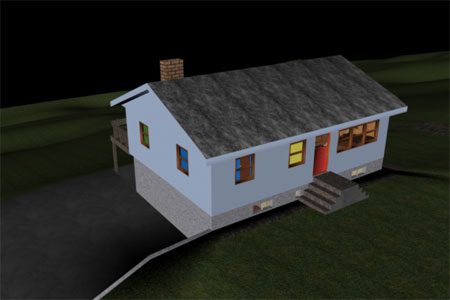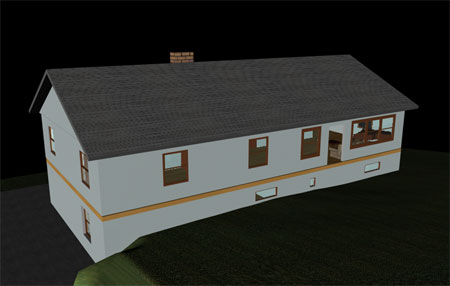Culture Orbital animation, version 2
 Science Fiction may not be everybody’s thing. But when you pull yourself away from mainstream SF movies like Star Wars and seek out some contemporary Science Fiction literature you might be pleasantly surprised. For me Science Fiction has always been more a literary thing, simply because I was reading books before I watched any SF on TV. I was in my early teens when I slipped into Science Fiction. The early 1970s. The Americans were still in the middle of sending men to the Moon via Apollo. In Germany, where I grew up, at that time SF was only very reluctantly coming to TV. The original Star Trek series, the british UFO series, the original “Day the Earth Stood Still”. My first exposure to SFdom. I didn’t see any SF movies at that time that were based on Science Fiction books. While reading Science Fiction you always had to imagine the alien landscapes, the space ships, the aliens. The first movie I watched based on a Science Fiction story or book was “Perry Rhodan”. I only dimly remember that even back then I was utterly disappointed because the movie did not show at all how I had imagined the characters, the spaceships, etc. Of course most people will not count Perry Rhodan as literature (although the writing gets better later in the series.) To this day SF movies made based on Science Fiction stories often don’t work for me. Notable exception is Kubrick’s “2001”.
Science Fiction may not be everybody’s thing. But when you pull yourself away from mainstream SF movies like Star Wars and seek out some contemporary Science Fiction literature you might be pleasantly surprised. For me Science Fiction has always been more a literary thing, simply because I was reading books before I watched any SF on TV. I was in my early teens when I slipped into Science Fiction. The early 1970s. The Americans were still in the middle of sending men to the Moon via Apollo. In Germany, where I grew up, at that time SF was only very reluctantly coming to TV. The original Star Trek series, the british UFO series, the original “Day the Earth Stood Still”. My first exposure to SFdom. I didn’t see any SF movies at that time that were based on Science Fiction books. While reading Science Fiction you always had to imagine the alien landscapes, the space ships, the aliens. The first movie I watched based on a Science Fiction story or book was “Perry Rhodan”. I only dimly remember that even back then I was utterly disappointed because the movie did not show at all how I had imagined the characters, the spaceships, etc. Of course most people will not count Perry Rhodan as literature (although the writing gets better later in the series.) To this day SF movies made based on Science Fiction stories often don’t work for me. Notable exception is Kubrick’s “2001”.
On the other hand of course there are so many Science Fiction stories I read I wish they made a movie of. If only because the story is written in such way that you can really see the ’movie’ play while you read the book. For me, one such book is “Consider Phlebas” which I had picked up because of the cover art (here’s a picture of the edition I read.) This was my first exposure to Iain M. Banks’ Culture universe.
There are so many giant and cool gadgets in this book that my inner movie screen became hyper-active. Space ships, 30km long. An extended train chase underground. And then the Orbitals! This is a place I wouldn’t mind moving to. You can read all the details at the Culture link earlier but the rationale to custom build a structure to live in space rather than terra-forming a planet makes sense to me – even when it is ever so out of our technological reach. Orbitals are big wheels, about 3 million km in diameter, put together from 1,000km square plates. Think Niven’s Ringworld, except there is not a sun at the center.
Anyway, recently I started building a scale model of an Orbital in Cinema 4d. It’s in the beginning stages because the size is staggering. This little video shows a first crude camera swing. Except for the first plate and its neighbor there are no details filled in. The yellow squares are the plates. Each 1,000km square. There are 4,500 of them in the model. As the camera follows the narrowing band of the Orbital it will zoom in on a small blue-green sphere. That’s an Earth sized planet, in the center of the Orbital.
The dimensions of this thing are staggering and Cinema 4d gets really hard to navigate once you deal with such large structures.
Watch version 2 of the animation (with music from my tune “Pink Floyd”).
There is more of my music here, just in case


